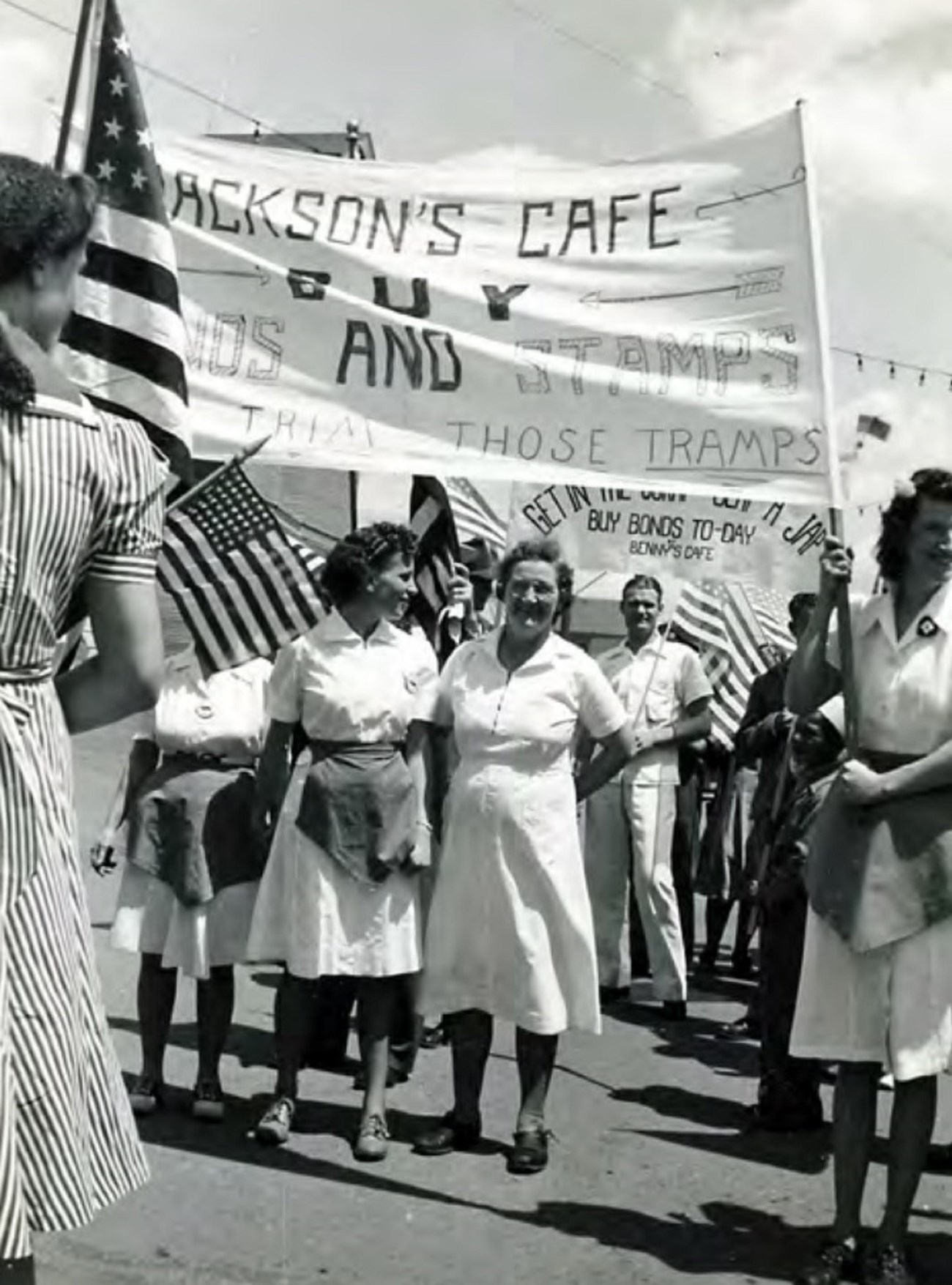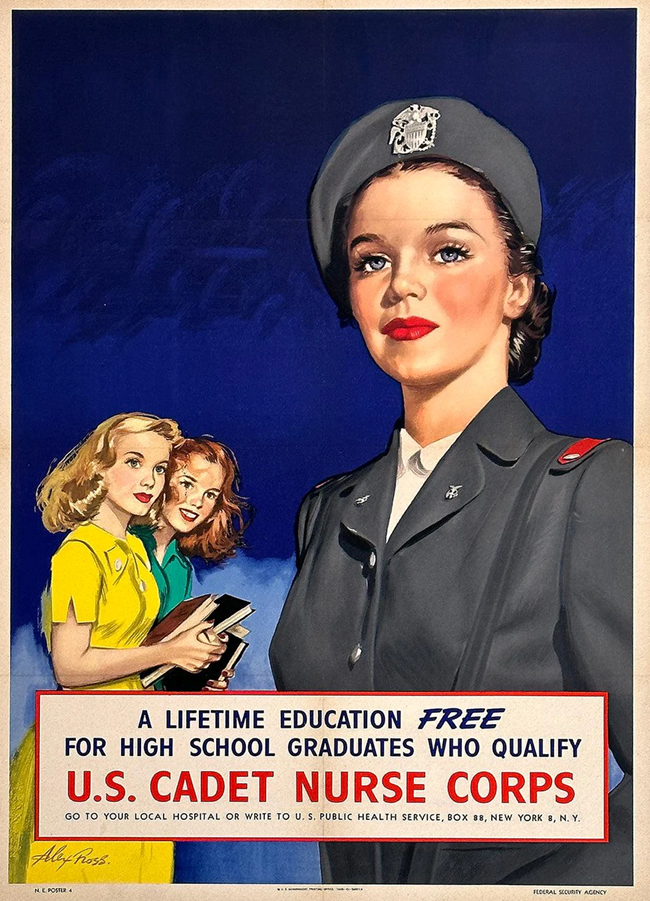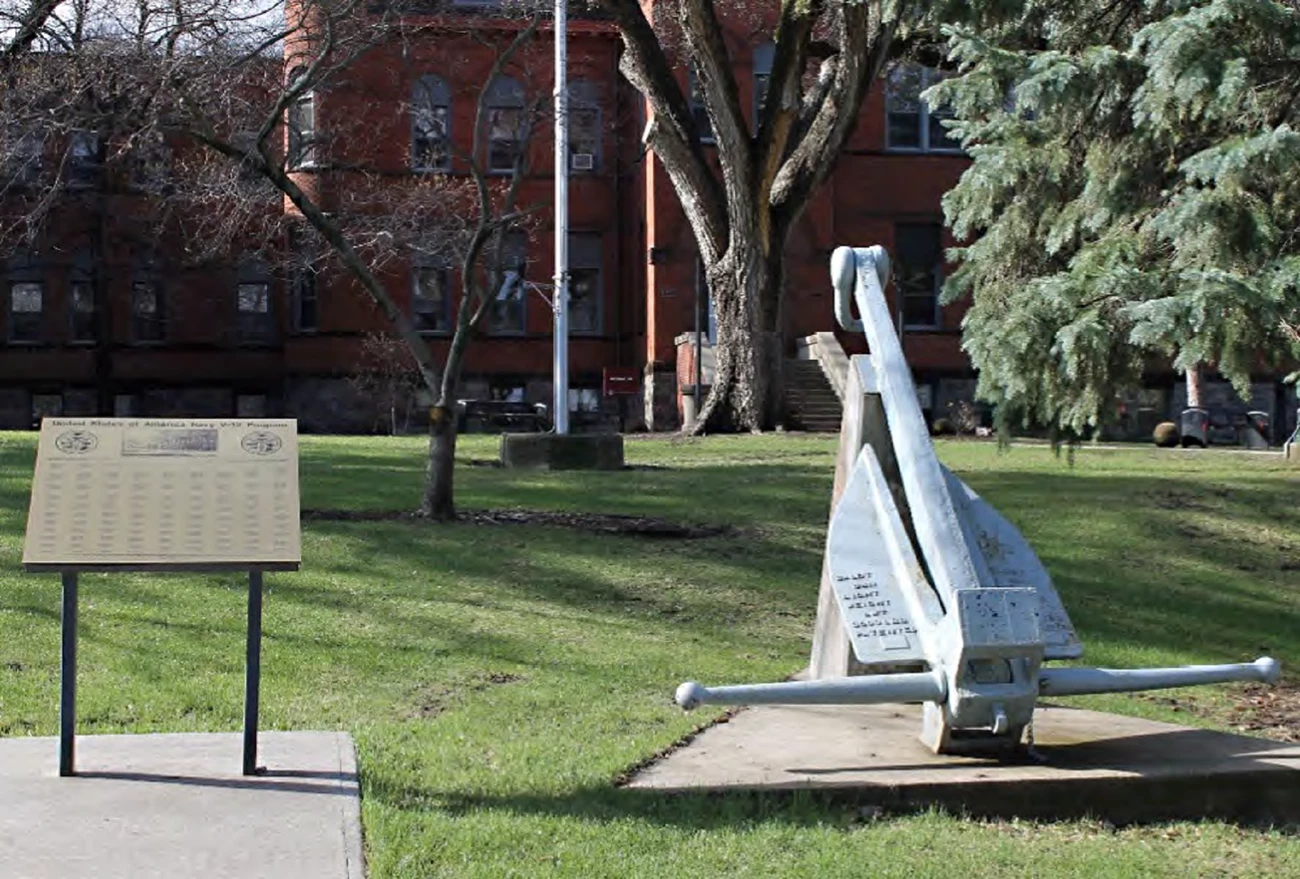Last updated: September 17, 2024
Article
Valley City, North Dakota

Valley City Times-Record
American World War II Heritage City
During the Second World War the citizens of Valley City, North Dakota participated in the home front through scrap drives, war bond and stamp drives, manufacturing, victory gardens, civil defense, and military service. In addition, Valley City participated in two unique educational programs run by the federal government: the V-12 Program and the United States Cadet Nurse Corps.
The V-12 Program
In 1943, Valley City State Teachers College (Valley City State University) was contracted by the U.S. Navy to train naval officers through the V-12 program. By late 1942, the size of the U.S. Navy had increased over sixty percent. To address the urgent need for commissioned officers and to slow dropping college enrollment rates, President Franklin Roosevelt asked the military to include institutions of higher learning in their mobilization plans. The Navy responded by creating the V-12 College Training Program, choosing private and state-run colleges and universities to host its classes. Candidates enrolled in the Navy's Reserve Officers Training Program; enlisted men recommended by their commanding officers; and high school seniors who had passed a qualifying exam were all eligible for the V-12 program.
The V-12 program at Valley City State Teachers College began on July 1, 1943, with the first group of 233 trainees reporting for duty on campus. Women’s dormitories were turned into barracks and the male trainees participated in all aspects of college life including sports with the V-12 Battalion band performing on campus each Saturday for review. After four months of college classes, to include classes on such topics as seamanship and damage control, trainees were sent on for 120 days of training at a Naval Reserve Midshipmen’s School. By 1945, 532 men had gone through the College's V-12 program.

Cadet Nurse Corps
While the V-12 Program was focused on men, the Cadet Nurse Corps was focused on women. In June of 1943, to address the ongoing nursing shortage in the U.S. Congress passed the Bolton Nurse Training Act. The Act created the United States Cadet Nurse Corps who's members pledged to serve in a military or essential civilian role for the duration of the War. Mercy Hospital School of Nursing in Valley City requested to take part in the Training Program making it one of 1,100 schools nationwide that participated in the program. Cadet nurses at Mercy Hospital received a monthly stipend as well as scholarships that covered tuition and fees. In addition, senior cadet nurses were given the opportunity to be assigned to special training. Cadet nurses who graduated from Mercy Hospital School of Nursing went on to staff U.S. hospitals and care for the wounded when they came home. In all, 180,000 women nationwide joined the Cadet Nurse Corps which was credited with helping to prevent a collapse of civilian nursing during the War.
Today Valley City commemorates and preserves its World War II efforts through oral histories, historic markers, Memorial Day celebrations, the 164 Infantry Memorial Highway, the V-12 Program Memorial at Valley City State University, Veterans Memorial Park, and exhibits at the Barnes County Historical Society Museum.

Valley City, North Dakota
